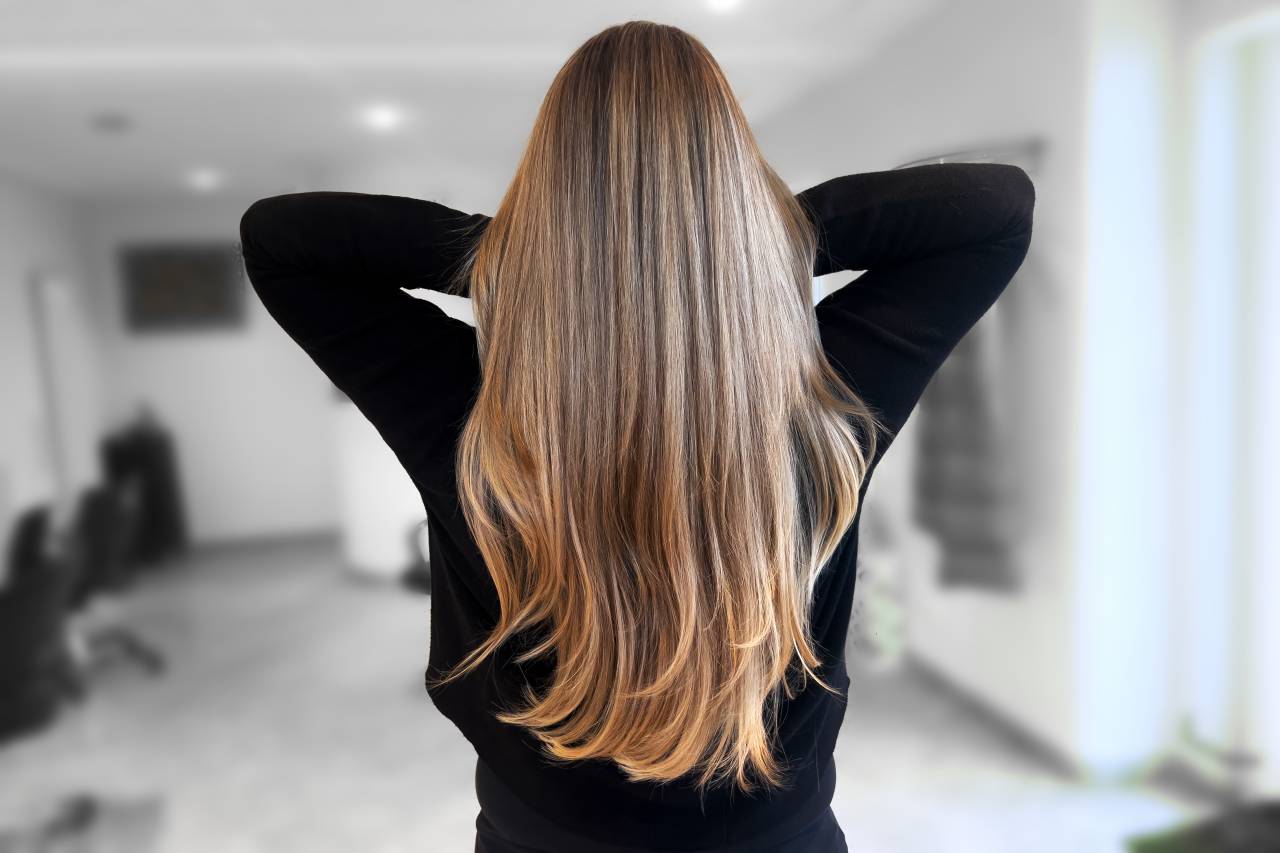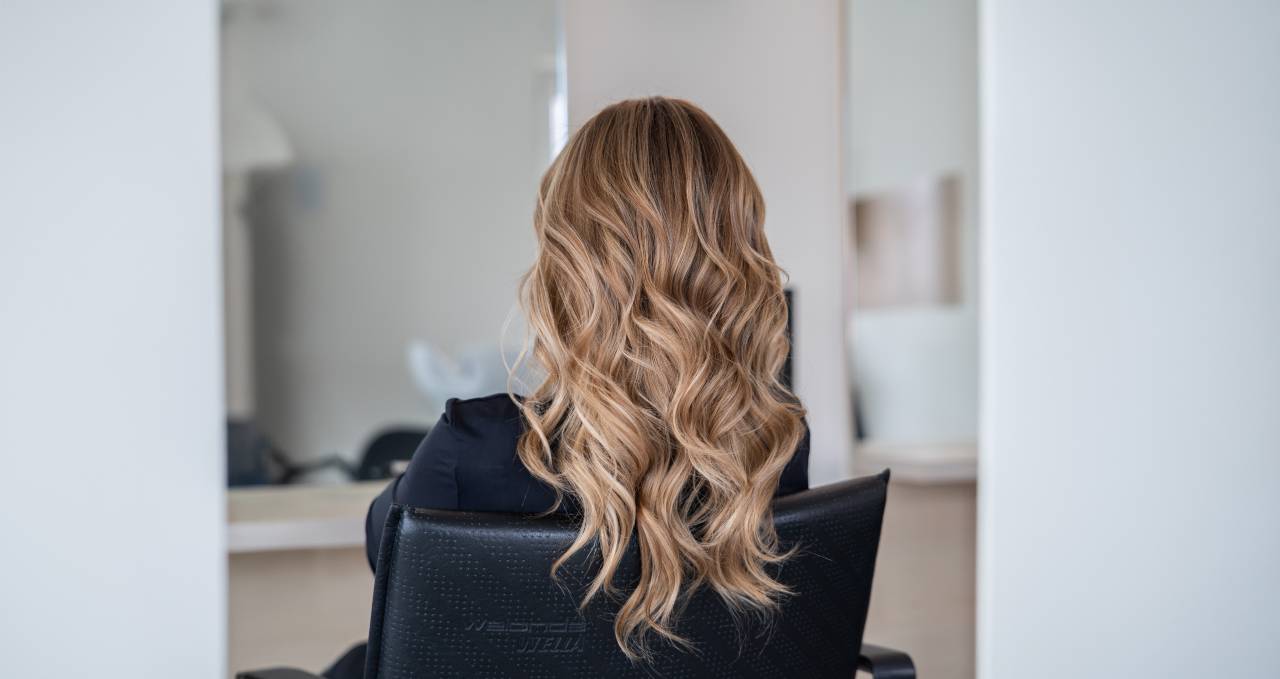In this blog post, we provide you with a guide to the most popular and well-known hair colouring techniques. These hair colouring techniques are probably commonplace in every hairdressing salon. And not without reason: They are among the most popular hairstyles for hair-conscious customers when it comes to colour in their hair. We explain what makes each of the colouring techniques different in terms of application and look.
Hair colouring techniques that hairdressers know and customers love
The guide from balayage to ombré and highlights to zebra stripes
Hey lovelies,
are you slowly but surely losing your way in the jungle of endless hair colouring techniques? Let's feel it: Between the numerous balayage variations, highlights and ombré styles, it's not easy to keep track. But don't worry: We're finally bringing clarity and order to the topic of hair colouring techniques for you.

The different hair colouring techniques at a glance
We'll give you an insight into the following hair colouring techniques and explain the differences between them:
highlights
ombré
balayage
foilyage
Highlights
Highlights as far as the eye can see. Highlights are probably the best-known and most versatile hair colouring technique. A wealth of variations make this hair colouring method particularly exciting. Here we present four different highlighting strategies and the key differences between them.
In general, highlights are fine sections of hair that differ from the rest of the hair colour due to colouring or bleaching. They give the hair more depth, contrast and dimension. Highlights can be applied in different shades and techniques to achieve different effects, for example natural highlights or eye-catching colour accents.

Highlights
Highlights are light-coloured strands in the hair that are created by colouring or bleaching the hair. Highlights add dimension and depth to the hair by adding additional shades to the main colour or base colour. Highlights can be subtle or striking, depending on the desired look. They emphasise certain areas of the hair and create a natural or sun-kissed effect.
Lowlights
Lowlights are a hair colouring technique in which darker shades are worked into the hair. Unlike highlights, which lighten the hair, lowlights add depth and dimension to the hair by adding darker shades. This technique is particularly suitable for adding fullness to the hair and creating a natural look. Lowlights help to conceal grey tones or vary the overall look of coloured hair without making drastic colour changes.
Babylights
The Babylights hair colouring technique uses very fine highlights to create a natural, sun-kissed look. This method imitates the subtle colour changes that occur in children when they spend a lot of time in the sun. The highlights are thinner and more delicate than conventional highlights, making them look particularly natural. Babylights are suitable for all hair colours and types and offer a gentle way to add dimension and depth to hair without creating drastic colour differences.
Babylights are right up your street? Here's the perfect way to get started in the world of hair colouring. Read more about the topic in our babylights blog post.
Chunky lights
Chunky lights are a hair colouring technique in which thick, contrasting strands are dyed into the hair. This technique creates an eye-catching and vibrant look, as the broad colour stripes are clearly visible and stand out from the base hair colour. Strong colours are often used, which enhances the effect. Chunky lights were particularly popular in the late 1990s and early 2000s and offer a bold alternative to more subtle colouring techniques such as ombré and balayage.
Highlights with the Colorina set
Want to create highlights too? With the Colorina set, it's quick and easy. In a short video sequence, we show you quickly and easily how you too can conjure up unique colour results with the highlights technique using the Colorina set.

Ombré
Ombré is a colouring technique in which the hair colour runs from darker roots to lighter ends. This effect creates a natural, sun-kissed look and requires less regular re-colouring as the roots remain darker. Ombré can be customised with different shades to suit individual style preferences.
Balayage
Balayage is a hair colouring technique in which colour is applied to the hair freehand to create a natural, sun-kissed look. The hair is coloured in sections to create soft transitions and highlights. This technique makes it possible to create an individual look that is perfectly matched to the natural hair structure and colour. Balayage is great for adding dimension and depth without the need for frequent touch-ups. This technique is particularly popular as it offers a natural look and is less stressful on the hair.
Want to know more? You can find out more details about classic balayage in our blog post on this topic.
Quick balayage
Quick and easy hair colouring: Quick balayage is a hair colouring technique in which light highlights are applied freehand to achieve a natural, sun-kissed look. The colour is only applied to the surface of the hair, which saves time and causes less damage to the hair. This method is particularly suitable for people who want a subtle colour change without frequent salon visits.
Curious about how quick balayage works? You can find more details and instructions for this technique in our blog post on this topic.
Vivid balayage
Vivid balayage is a hair colouring technique that uses bold, vibrant colours to create a flowing colour gradient. In contrast to traditional balayage, which often uses natural tones, vivid balayage uses striking, intense colours such as blue, purple, pink or red. This technique makes it possible to give the hair a unique and individual look by applying the colours freehand and selectively to achieve an eye-catching result.
Pastel balayage
Pastel balayage is a hair colouring technique that uses soft, pastel shades such as pink, lavender or sky blue. These colours are applied to the hair freehand to create a natural, soft colour gradient. The result is a soft, sublime look that is particularly trendy and modern.
Money piece balayage
Money piece balayage is a hair colouring technique in which individual front strands of hair are selectively coloured lighter. This technique creates a striking contrast and frames the face harmoniously, creating a fresh and lively look. This variant of balayage is characterised by the highlighted front strands.
Reverse balayage
Reverse balayage is a hair colouring technique where darker shades are applied to lighter hair to create depth and contrast. Unlike traditional balayage, where lighter highlights are applied to darker hair, reverse balayage aims to create a more natural look by creating dimensional shading. This technique is particularly suitable for blonde or light-coloured hair that is enhanced with darker shades to create more texture and body.
Foilyage
Foilyage is a hair colouring technique that combines balayage and foil highlights. Individual sections of hair are wrapped in foil to create targeted brightness and achieve a natural, sun-kissed look. This method enables precise colour gradients and intense highlights, which are particularly effective on darker hair.
Colorina: Master all hair colouring techniques with one tool
Whether highlights or lowlights, classic balayage or ombré, with our Colorina hair colouring tool you can conjure up seductive colour gradients, dramatic dimensions and radiant highlights in no time at all. Because without a brush, the Colorina tongs only need one pull to apply the colour evenly on both sides. This not only makes the hair colouring process much easier, but also much more efficient. A great bonus: Your workspace in the salon or at home stays nice and clean and you get the professional look you've been dreaming of.

You can tell your hairdresser
Your passion for hair and colouring techniques is unmistakable! That's why we have a fun fact for you here that could serve as an ideal conversation starter at your next visit to the hairdresser.
Did you know? Henna is one of the oldest hair colouring methods. The plant-based dye, which is extracted from special leaves, was used more than 5,000 years ago. The ancient Egyptians coloured their hair and even mummy hair with henna to keep it looking fresh.



